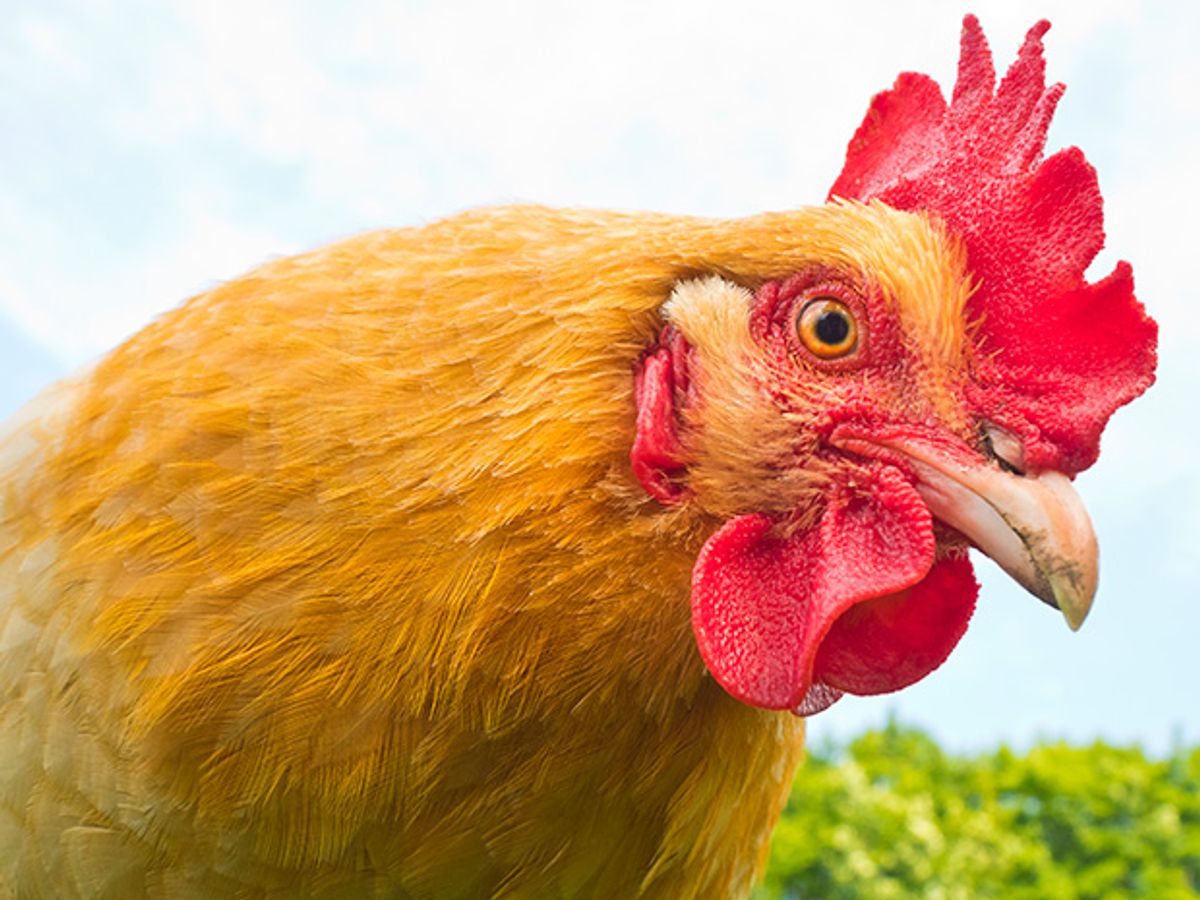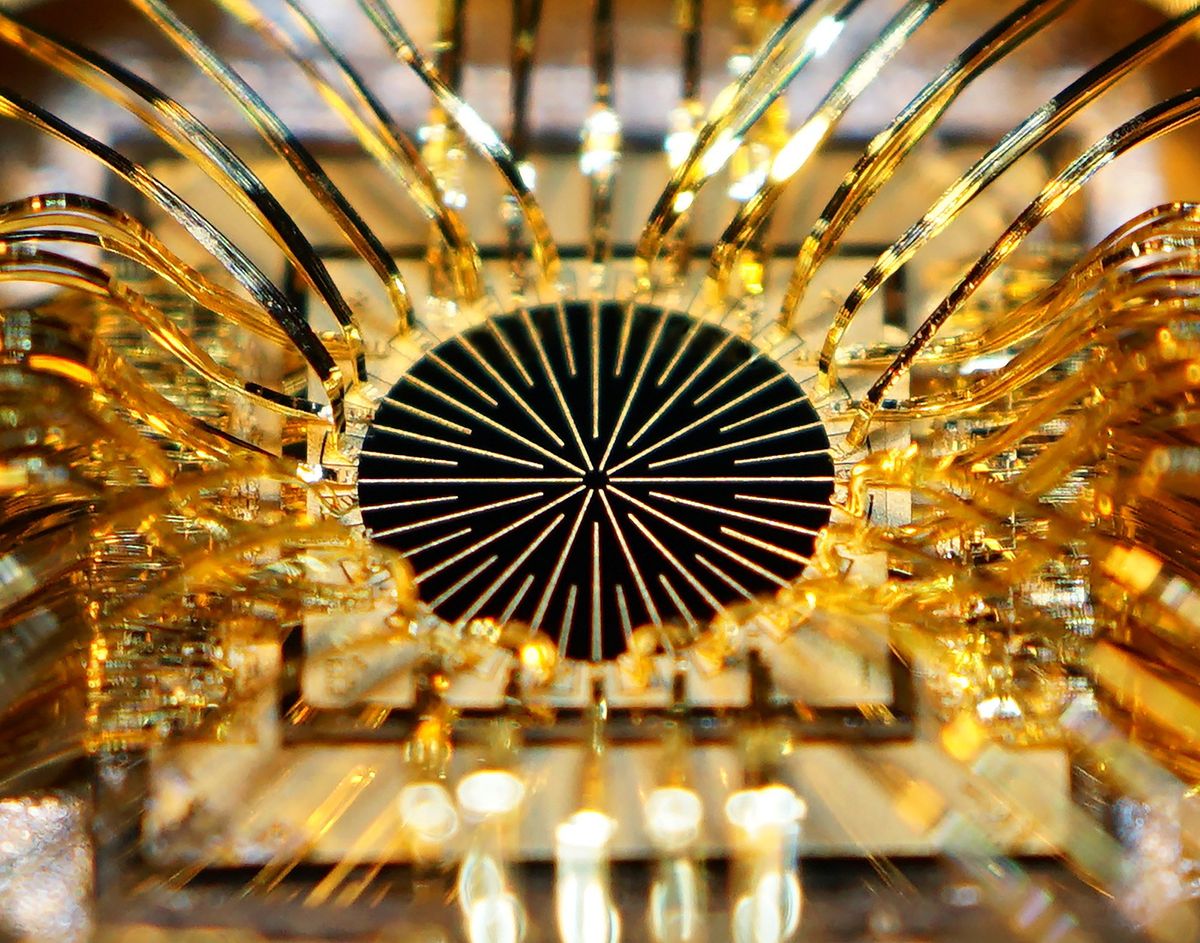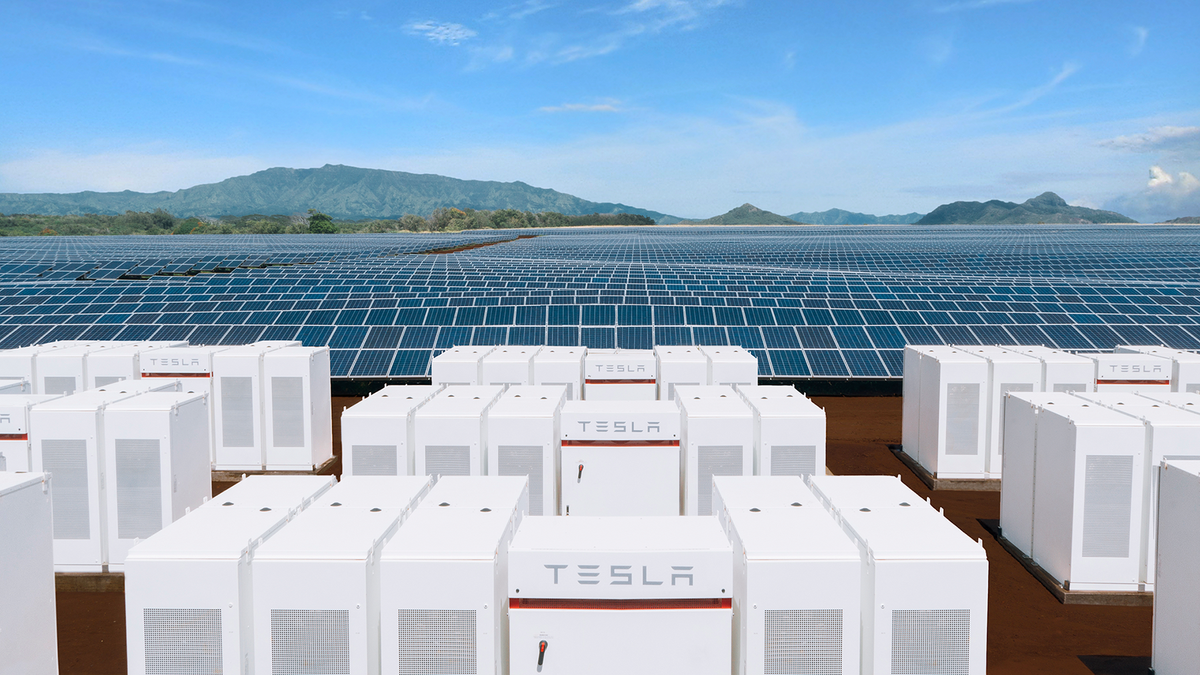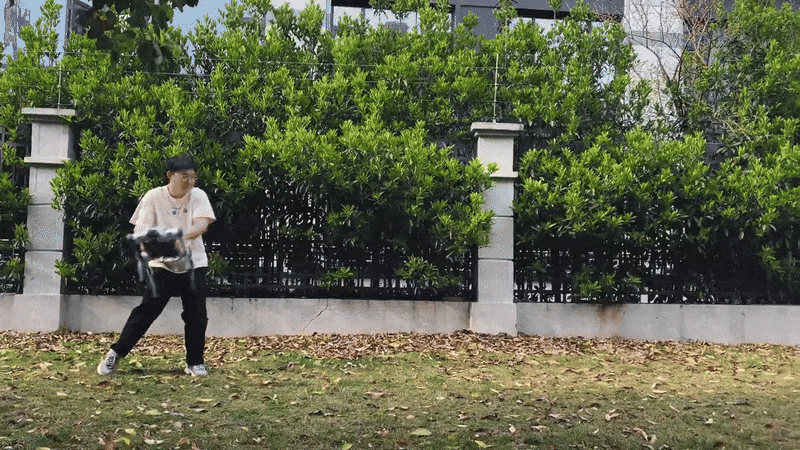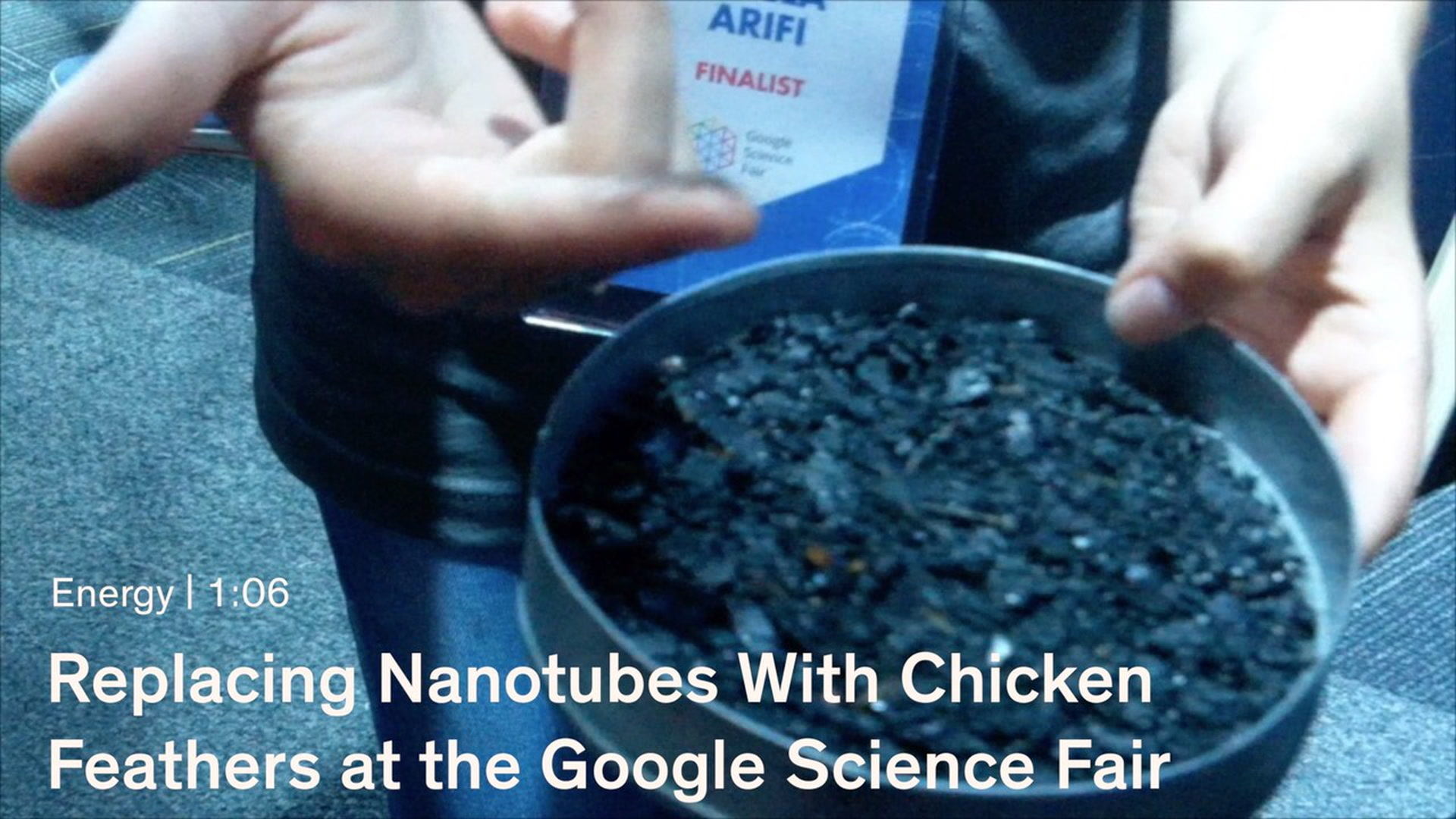
Researchers at large laboratories have been investigating carbon nanotubes for storing hydrogen in, say, hydrogen-powered vehicles. Investigators at the University of Delaware proposed that carbonized chicken feathers could work as an inexpensive replacement; other researchers have produced biodiesel out of chicken feathers.
Anela Arifi and Ilda Ismaili, teens from Bosnia and Herzegovina who have far more access to chicken feathers than to expensive nanotubes, decided to combine these two discoveries. They built a reactor that produces both biodiesel and carbonized chicken feathers. Their system, chosen out of thousands of submissions, got them to the finals of the Google Science Fair, held last week in Mountain View, Calif. See how their reactor works in the video below, and hear them talk about the potential of carbonized chicken feathers in the video above.
Tekla S. Perry is a senior editor at IEEE Spectrum. Based in Palo Alto, Calif., she's been covering the people, companies, and technology that make Silicon Valley a special place for more than 40 years. An IEEE member, she holds a bachelor's degree in journalism from Michigan State University.
